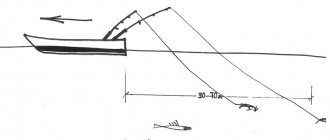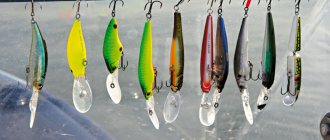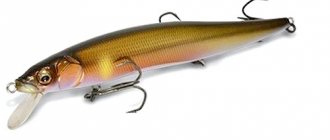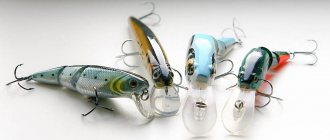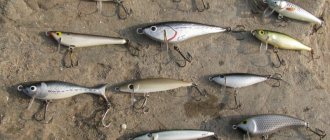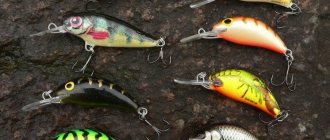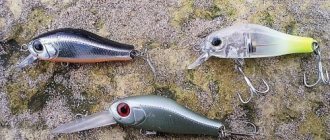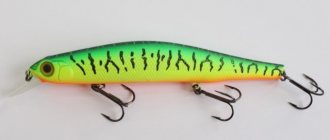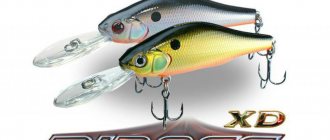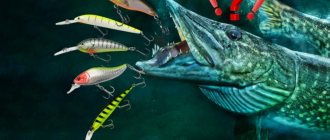Trolling is fishing, with the obligatory use of a motorized swimming device and spinning rods with a reel.
It is these “bells and whistles” that distinguish trolling from the track, which uses a rowing boat, or in the simplest version, a fishing line with bait without a rod.
Naturally, trolling is a more expensive method of fishing than its ancestor, track fishing. However, this does not mean that only “rich Buratins” can troll. Trolling is quite accessible and popular among the fishing masses.
Trolling fishing
Trolling equipment
The defining moment for starting trolling is having a boat with the ability to install an engine. Everything else can be used from other types of fishing.
There are two main types of boats suitable for trolling, each of which has its own advantages and disadvantages:
- Corpus. You need a transport vehicle and trailer, as well as storage space. A place on the pond is needed to launch the boat into the water and lift it from the water. It is possible to install a powerful motor and handles better than inflatable ones.
- Inflatable. Made from PVC. They require time-consuming pumping, which is fully compensated by the electric pump. When assembled, they are compact and do not require additional means of transportation. They do not provide for the installation of powerful engines and are poorly controlled when planing, especially punts. It is more difficult to sink such boats than hull ones, but they are susceptible to mechanical damage.
The conditions for using swimming equipment change dramatically if the fisherman lives next to a body of water.
Advice! An important device for trolling is an echo sounder, without which fishing, especially in large bodies of water, turns into an unproductive ride around a body of water. Also an optional, but very nice addition to the echo sounder will be a GPRS navigator. Using this device, you can mark bite locations and plan further movement.
Requirements for the craft
On a boat equipped with special fasteners, you can install several spinning rods at once, which significantly increases the chance of a bite.
So, about trolling boats. What should they be:
- Boat. The most comfortable boat. For the most part, the boats are well seaworthy and allow you to load a large number of things. The only negative is the weight and dimensions.
- Inflatable motor boat. Its feature is mobility. Boats made of PVC material are compact. Models with a keel are quite stable on the water. Inflatable boats are relatively easy to maintain and more affordable. The running dimensions of the trolling vessel are 3.5-4 meters.
Motor: Today, most use foreign-made motors. Operation is simple, maintenance is not annoying. When purchasing a motor, you need to remember that the internal combustion engine has four strokes and is quieter than a two-stroke engine. Its fuel consumption is lower, but the engine itself is slightly more massive than a two-stroke and the price is higher.
On a note! If you don’t walk far on water, you can use power units with a capacity of 2-5 l/hp. If you plan to move 7-10 km from the anchorage, it is better to use a powerful engine that can bring the ship to planing in any weather.
On a PCV boat with two passengers, a motor with a power of 8-15 horses is often installed. This set is considered universal.
For trolling in small bodies of water, it is convenient to use a compact electric motor. The boat under it moves almost silently, which allows you to quietly approach promising places.
We recommend reading: Catching pike perch at night with a spinning rod
Trolling tackle
When choosing a spinning rod, you need to take into account that when moving, a wobbler and other baits create a noticeable load. The final choice of gear depends on the weight of the intended bait, the size of the possible trophy and fishing conditions:
- On large and deep bodies of water, the rod test can be up to 200 g.
- On relatively small rivers and lakes with a depth of up to 6-8 m, a test of up to 50-60 g is sufficient.
- For small lakes and rivers, a rod with a test weight of 20-40 g is enough.
- The length of the rods used for trolling is from 2.1 to 2.7 m. Long casting is not required. The main purpose of the rod is fishing and bite signaling. To perform these functions, rods with fast or medium-fast action are suitable.
- Reels are used both inertia-free reels of size 3000 or more, and multiplier reels. An ideal, but not budget option, is a multiplier with a line counter.
- A braided cord with a breaking load of about 15-20 kg is wound onto a reel. It is possible to use monofilament line with a low elongation coefficient, but the thickness of such line will sharply reduce its quantity on the reel.
- Downrigger for establishing the required diving depth of the bait.
>>>>Downrigger from 200 rubles and other equipment for trolling on AliExpress>>>>
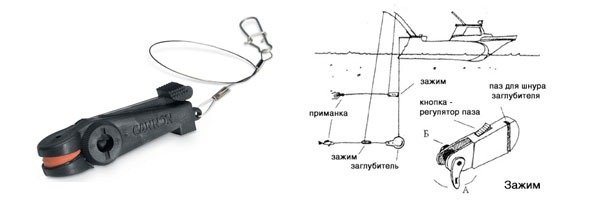
The main bite indicator in trolling is the tip of the rod, which should also show uniform action of the bait and contact with the ground.
Lures for trolling

The most commonly used and effective are wobblers. The main advantage of wobblers over other baits is the passage of the bait at a given depth. All other baits occupy the horizon during wiring, which must be regulated by the speed of the vessel, the length of the release and the weight of the bait. It cannot be said that the above parameters do not affect the wiring of the wobbler, but this influence is much less.
Top 5 rating of wobblers for trolling
- Rapala – suitable for deep sea fishing;
- Minnow from the X-Rap series - for fishing in surface layers and depths up to 3 meters;
- MAGNUM - works great at great depths for catching trophy fish;
- Perch, Boxer, Hornet - for fishing at depth;
- JaxonKaras models 8-11 cm are budget-friendly, have a sweeping game that seduces a large predator.
When trolling, small spoons are rarely used, but if such a need arises, additional weight is used to deepen them.
Also, to hold the bait in the bottom layers when trolling, equipment with a retractable leader and a floating wobbler is used.
Rating of wobblers for trolling for pike perch
Some brands of manufacturers have proven themselves well. The optimal list looks like this:
- The ReefRunner RipShad is a type of wobbler that has a thin profile and is an excellent addition to a trolling angler's collection. It is preferable to use slow wiring when working with them; some models are difficult to operate and require precise adjustment. The most commonly used models for hunting pike perch are RipShad 400 and RipShad 200.
- The Lindy Shadling goes 4 meters deep for optimal fishing and attracts fish at boat speeds of 1 to 5 kilometers per hour. The size of the bait ranges from 60 to 72 mm; in addition, a sound rattle is installed in the device to create vibration, and many models are produced with holographic coloring and filling.
- Sebile Rattsler is an effective lure for catching pike perch. This bait is buried in a water depth of up to 6 cm. A large wobbler creates strong water vibrations that lure fish. The special play of the bait occurs due to the specially designed blade fixed in front.
- The CottonCordell WallyDiver is a bait that has been improved in recent years, and its effectiveness has been repeatedly reported by many anglers. Device sizes are available for sale in the range from 62 to 94 mm. The best wobbler for trolling is produced with the ability to go deeper in several versions, which allows it to be used in different bodies of water and especially difficult fishing conditions. The variety of models makes this wobbler indispensable in any country.
- Rapala BarraMagnum pike perch bait , which is a product of the famous Rapala concern. The wobbler is 11 cm long, deepens to an average depth, and is intended for catching trophy pike perch, whose weight reaches tens of kilograms. Rapalla wobblers for trolling are effective in catching catfish.
Trolling fishing technique
The main requirement and difficulty when fishing by trolling is placing the bait in the layers of water in which the fish are located. There are techniques that diversify trolling and make it more effective:
- reducing the speed of the vessel, increasing the weight of the load and lengthening the release of the bait - increase the depth of immersion;
- periodic pulling of the rig with a spinning rod creates a kind of step that can encourage a predator to bite;
- in summer, during periods when the bite on a large wobbler weakens, replace it with a smaller one, such as a minnow or an oscillating spoon;
- using twitching while trolling;
- minimum retrieving speed - very rare predators bite on bait that moves at breakneck speed;
- an oscillating spoon is used for wiring in the surface layers;
- at a depth of 2-4 meters, place a floating wobbler with the appropriate immersion depth;
- for a depth of 4-6 meters, sinking and diving wobblers work well, as well as rotating spoons with additional weight;
- at depths exceeding 6 meters, sinking wobblers with long and medium-sized blades are used.

Such holders are made independently from metal or plastic pipes, and can also be purchased in a store. The holders are rigidly fixed in the boat. Advice! To ensure that loose spinning rods do not get tangled during the fishing process, only slow and smooth turns of the vessel are used. For the same purpose, at turns, loose fishing lines are reeled in too far.
Choosing lures for pike trolling
Choosing the right lures is one of the most important factors in successful trolling fishing. In this case, they most often use:
- wobblers;
- soft baits;
- vibrators;
- natural fish on a rig.
Other baits, such as spinnerbaits, bucktails, spinners, etc., are used extremely rarely, since their characteristics are not very suitable for uniform fishing at depth.
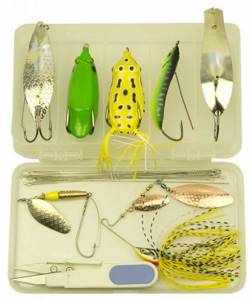
Let's consider the use of the best baits for trolling pike in more detail:
- Wobblers are predominantly large models that have their own active game. Since the topic of choosing and using wobblers is too broad, they will be discussed in more detail below.
- Silicone baits are especially effective when trolling vibrating tails from 10 cm in size, on a jig head of suitable weight. You can also use other large baits with active play - twisters, rippers, imitations of frogs, newts, crayfish, etc. All these baits are often equipped with additional hooks to increase the number of effective bites.
- Oscillating spoons are traditional baits that have gone out of fashion, but have a high catchability, especially in hard-to-reach waters without strong fishing pressure. For trolling, especially when fishing for pike, wide spinners are well suited, they have amplitude action and are not prone to falling into a “tailspin” when the fishing speed increases.
- The spinner for trolling for pike can be additionally equipped with a small twister. This allows you to make the play of the spinner more stable, and give the fish an aiming point in the area where the tee is located.
- Live bait or dead fish on a tackle is one of the most effective trolling baits, which has lost popularity due to the difficulties of preparation and storage. However, if the bite is bad, it is worth switching from artificial bait to natural - this can increase the frequency of bites several times, and the bites themselves will become more reliable.
Where to fish for pike and zander by trolling
Successful trolling depends on the presence of a large body of water and favorable weather. After finding a place where fish accumulate, you can easily fish the area with a spinning rod and anchor at a point. Here are some examples of places where you can successfully catch fish when trolling:
- Karelia;
- Rostov region - Don River;
- Tsimlyansk Reservoir;
- Volgograd region - Don River;
- Kostroma region - Volga River;
- Tula region: Upa, Oka;
- Verkhneruzsky reservoir;
- Pyalovskoye Reservoir;
- Lake Volgo Tver region;
- Buzan is a wide branch of the Volga;
- Ob River.
Features of seasonal fishing
Anglers begin trolling in early spring and continue until freeze-up in late autumn. Fishing features vary slightly depending on the season.
in spring
After spawning, predators often move to warm shallow waters, where they are attracted by small fish. The depth of such areas is only 1-1.5 meters. The sounds of running boat engines only scare away the fish. Spring is not the most productive time for trolling due to the passivity of pike for fast baits. Predators in the spring are interested in prey larger than wobblers.
In summer
From June to September, water areas near holes and steep banks are fished. Wiring should be done along river beds in places where calm waters and currents meet, favorite places for pike hunting. In cool, rainy times, it is easier to interest a predator with bright bait in acidic shades.
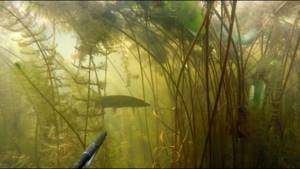
Pike in clear water
in autumn
After summer, with the onset of cold weather, the most catchy time comes. Pike gain weight to survive the winter. They look for the predator in the lower horizon of the water, near the walls of reeds, along coastlines. Aquatic vegetation gradually dies off, reducing the risk of snags.
Secrets of trolling fishing
Some tips and observations from trolling experience:
- to reduce the number of losses of baits on hooks, it is necessary to have a release;
- Each angler selects the length of the bait release independently; there are no standards, but on average a release of 30-50 meters is used;
- using an echo sounder and GPRS navigator, a fisherman can create his own navigation map of the reservoir;
- wiring near the bottom tempts pike and pike perch to bite;
- a wobbler, periodically tapping the bottom and raising clouds of turbidity, provokes pike perch and large perch to bite;
- one spinning rod is equipped with a large deep-sea wobbler, and the second with a small one, going in the middle layers of water;
- a school of fish found by trolling, for example, pike perch or perch, can be “nipped” using spinning methods;
- on a boat it is necessary to have a landing net or hook, but on an inflatable boat the hook can be dangerous.
No matter how much advice and pre-received information there is, every angler, before starting to fish successfully, gains his own experience, so let’s go out to the pond and try it. NHNCh dear fishing friends!
Trolling video
Catching pike by trolling video
TROLLING - fishing for trophy pike on the Dnieper. Flagman company expert Alexander Silenok demonstrates catchy models of wobblers and the features of trolling fishing in the autumn.
Catching pike perch using trolling video
The season for catching predatory fish has begun. Experienced fisherman Viktor Ivashin will keep us company in catching pike perch, pike and catfish. “About Fishing Seriously” video No. 190
Wobblers fishing by trolling video
Trolling for beginners video
Fishing Shcherbakovs Issue 33. Trolling on the River 1. Shcherbakov brothers.
https://youtu.be/2PjMmP_-RY0
